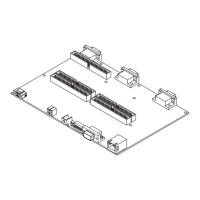
Do you have a question about the National Instruments sbRIO-9611 and is the answer not in the manual?
| Operating Temperature | -20 °C to 55 °C |
|---|---|
| Operating System | NI Linux Real-Time |
| Communication | Ethernet, USB, serial |
| Processor | Dual-core ARM Cortex-A9 |
| FPGA | Xilinx Zynq-7000 series |
| Storage | 4 GB flash memory |
| Ethernet | 10/100/1000Base-T |
| Power Supply | 9 V to 30 V DC |
Lists required software for programming the NI sbRIO device.
Lists required hardware for using the NI sbRIO device.
Connects serial devices using the RS-232 port.
Uses the internal clock for date/time synchronization.
Determines if the embedded LabVIEW RT engine launches at startup.
Enables serial port access for IP address and firmware version retrieval.
Resets the device's IP address to factory default settings.
Prevents a LabVIEW RT startup application from running.
Prevents a LabVIEW FPGA application from loading at startup.
Reboots the processor and affects FPGA operation.
Describes the function of the FPGA and USER LEDs.
Explains the POWER and STATUS LEDs and error indications.
Describes protection against overvoltage and ESD events for DIO channels.
Explains how to use the +5V power output from headers P2-P5.
Details how to configure channels for differential measurements for accuracy.
Explains NRSE configuration for improved noise rejection.
Describes protection against overcurrent, inrush, and short-circuit conditions.
Details Ethernet interface, compatibility, rates, and cabling distance.
Lists baud rate, data bits, stop bits, parity, and flow control settings.
Details nonvolatile and system memory capacities for different models.
Lists logic cells and embedded RAM for the Xilinx FPGA.
Specifies overvoltage protection limits for analog input channels.
Covers number of channels, resolution, nonlinearity, and input ranges.
Details tables and formulas for absolute accuracy calculations.
Details accuracy metrics and stability characteristics like offset/gain drift.
Details update time, noise, slew rate, and settling time for outputs.
Specifies the power available from the 5V pins and its limitations.
Details maximum power consumption for internal operation, DIO, 5V, and C Series modules.
Guidance on WEEE compliance and battery replacement/disposal.
Specifies torque for terminals and lists device weights.
